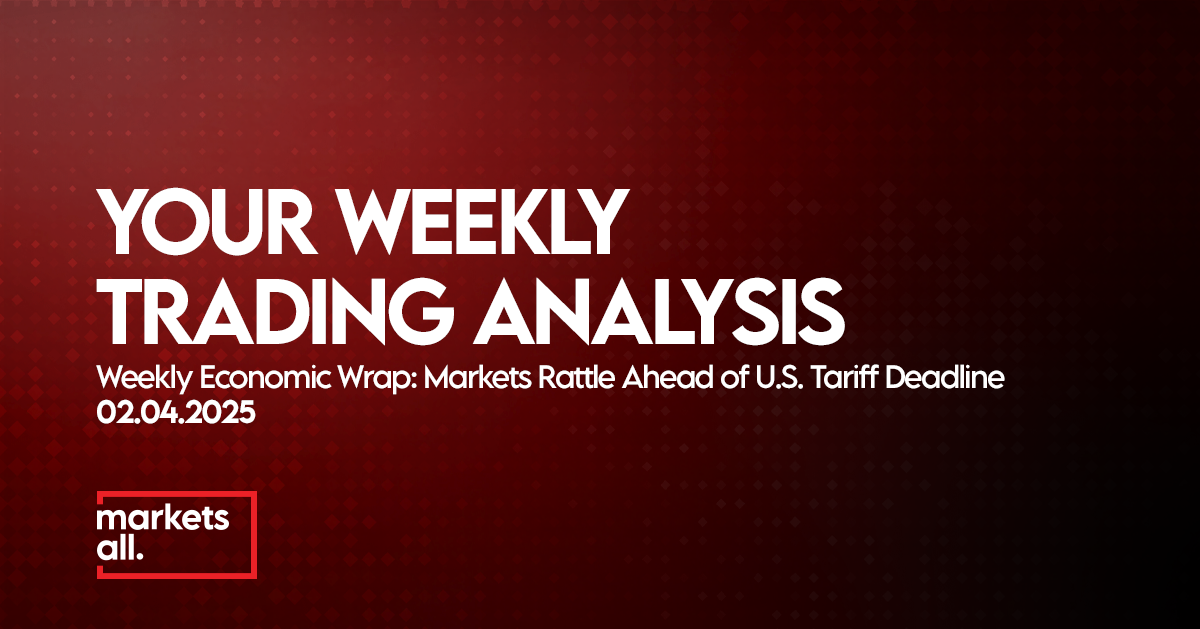The past week has been marked by escalating trade tensions, primarily driven by U.S. President Donald Trump’s announcement of new tariffs set to take effect on April 2, dubbed “Liberation Day.” These developments have led to significant market volatility, with global equities declining, safe-haven assets like gold reaching record highs, and increased fears of a potential recession. Additionally, manufacturing activity worldwide has shown signs of contraction, and consumer confidence in the U.S. has deteriorated to a four-year low. Looking ahead, markets are bracing for the implementation of these tariffs and their potential ramifications on global trade and economic growth.
United States
Previous Week
- Trade Policy: President Trump announced plans to impose new “reciprocal tariffs” on April 2, targeting imports from multiple countries. This move has intensified fears of a global trade war and potential economic slowdown.
- Market Performance: Major U.S. stock indices experienced significant declines. The Dow Jones Industrial Average fell by 0.96%, the S&P 500 by 1.53%, and the Nasdaq Composite by 2.39%. Investors sought refuge in safe-haven assets, with gold prices surging to a record high.
- Economic Indicators: The Conference Board’s consumer confidence index dropped to 92.9 in March, the lowest level since January 2021, reflecting growing concerns about the economic impact of tariffs.
Upcoming Week
- Tariff Implementation: The new tariffs are set to be implemented on April 2. Markets will be closely monitoring the specifics of these tariffs and potential retaliatory measures from affected countries.
- Economic Data Releases: Key reports to watch include the U.S. employment data for March, which will provide insights into the labor market’s health amid rising trade tensions.
Europe
Previous Week
- Market Performance: European shares fell to their lowest close in two months, with the pan-European STOXX 600 index declining by 1.5%. Investors reacted negatively to the impending U.S. tariffs and the potential impact on European exports.
- Economic Indicators: Germany’s inflation rate eased more than expected in March, providing some relief amid broader economic concerns. However, the overall outlook remains cautious due to external trade pressures.
Upcoming Week
- Trade Developments: European leaders are expected to respond to the U.S. tariffs, potentially exploring countermeasures or negotiations to mitigate the impact on their economies.
- Economic Data Releases: Focus will be on manufacturing and services PMI data to assess the health of the Eurozone economy in the face of escalating trade tensions.
United Kingdom
Previous Week
- Trade Relations: The UK government expressed hope that any imposed U.S. tariffs would be reversed shortly if the two sides can agree on the outline of a new economic partnership.
- Currency Performance: The pound remained steady but exhibited signs of investor caution as markets awaited further details on the U.S. tariff plans and their potential impact on the UK economy.
Upcoming Week
- Negotiations with the U.S.: The UK is likely to engage in discussions with U.S. counterparts to seek exemptions or reductions in the newly announced tariffs, aiming to protect key industries and exports.
- Economic Indicators: Attention will be on the UK’s manufacturing sector performance and any indications of how businesses are coping with the heightened trade uncertainties.
China
Previous Week
- Manufacturing Activity: China’s official manufacturing PMI rose to 50.5 in March, the highest reading since March 2024, indicating expansion. This uptick was partly attributed to factories accelerating production ahead of the anticipated U.S. tariffs.
- GDP Growth Forecast: Standard Chartered raised its 2025 GDP growth forecast for China to 4.8% from the previous 4.5%, citing stronger-than-expected real activity and positive PMI data.
Upcoming Week
- Trade Measures: China, along with Japan and South Korea, has agreed to jointly respond to the U.S. tariffs. Details of these countermeasures and their potential impact on regional trade dynamics are anticipated.
- Economic Data Releases: Investors will be watching for updates on export figures and any signs of economic slowdown resulting from the escalating trade dispute with the U.S.
Japan
Previous Week
- Business Sentiment: The Bank of Japan’s Tankan survey indicated that business sentiment among large manufacturers worsened to a one-year low, reflecting concerns over U.S. tariff uncertainties and their potential impact on exports.
- Market Performance: The Nikkei 225 index experienced a significant decline of 4.1% amid heightened trade tensions and investor caution.
Upcoming Week
- Trade Policy Response: Japan, in coordination with China and South Korea, is expected to outline its response to the U.S. tariffs, which may include diplomatic negotiations or countermeasures.
- Economic Indicators: Focus will be on machinery orders and industrial production data to gauge the health of Japan’s manufacturing sector amid external pressures.
Emerging Markets (EMEA)
Previous Week
- Market Reactions: Emerging markets, particularly in Asia, faced significant capital outflows as hedge funds reduced exposure ahead of the U.S. tariff announcements. South Korea, China, and Taiwan were notably affected.
- Economic Forecasts: Italy’s business lobby lowered its GDP growth forecast, citing concerns over the looming U.S.





Leave A Comment